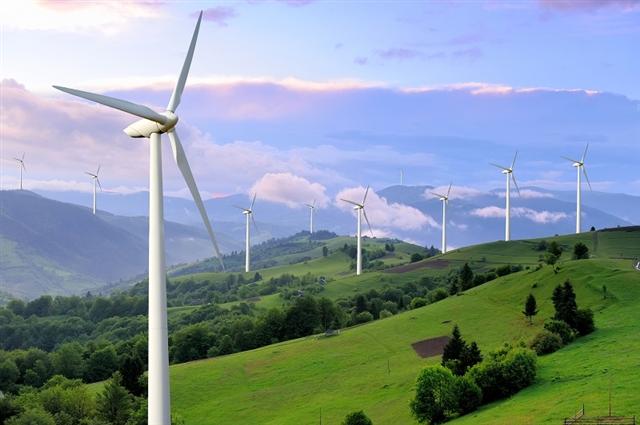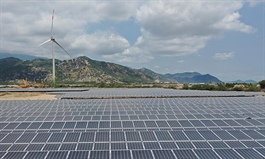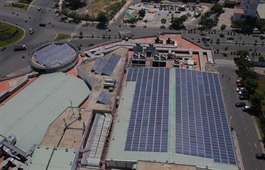New strategies essential for nation’s energy-saving goals
New strategies essential for nation’s energy-saving goals

New strategies essential for nation’s energy-saving goals (photo: shutterstock)
|
Before the Family Electricity Saving Programme came into being, Viet Tri city in the northern province of in Phu Tho used a relatively large amount of electricity. Phu Tho has now mobilised 12,000 customers to participate in this programme, contributing to reducing electricity consumption and related emissions that cause environmental pollution.
Resident Pham Tien Dung explained that people in his area are now more used to turning off electric devices completely when leaving a room and choose to use energy-saving equipment more often, thus limiting electricity use during peak hours.
“This habit not only helps us pay less for electricity but also got the praise of the local power company,” Dung said.
Changes in the perception of locals such as in Viet Tri show how much electricity consumption can be impacted by raising awareness. As energy scarcity becomes an ever-increasing issue in Vietnam, the country is eager to further promote energy efficiency among locals and businesses.
Vietnam saved about 16 million tonnes of oil equivalent (TOE) or 103.7 billion kWh of electricity in the 2006-2015 period, thanks to the implementation of the National Energy Efficiency Programme (VNEEP). The programme was reapproved in 2019 to last until 2030, targeting to reduce national energy consumption by 5-7 per cent by 2025, and 8-10 per cent by 2030.
The VNEEP already contributed to decreasing energy consumption between 2006 and 2010 by 3.4 per cent and by another 5.6 per cent in the 2011-2015 period.
However, despite reapproval, general interest in power saving has declined, with many localities not considering energy saving one of their priorities. Only 17 of the 63 cities and provinces have pledged to implement the programme.
Although national energy-saving efforts have achieved some results, data from the Ministry of Industry and Trade (MoIT) showed that energy consumption remains high in many industries, even up to 1.3-1.6 times higher than in other regional countries. In total, the energy consumption of the industrial sector now accounts for more than 47 per cent of total national consumption, according to data presented by the Vietnam Energy Forum two years ago.
In addition, wasteful and ineffective use of energy continues to exist in many industries and localities, with community awareness remaining limited. Many businesses and households have not yet prioritised energy-saving measures, while access to credit loans to implement respective projects for businesses is challenging. Moreover, state management bodies’ responsibility seems low, while the funding opportunities mentioned in the VNEEP do not seem encouraging enough for many to use energy economically and efficiently.
The implementation of the revised Power Development Plan VII (PDP7) showed that there are still many problems that need to be overcome. Many power projects, including coal-fired thermal power plants, are delayed, increasing the risk of power shortages, especially in the next five years. Meanwhile, the structure and demand for electricity use in economic sectors and regions have changed, thereby requiring reallocation and redistribution.
Remedying shortcomings
According to data published by the World Bank, Vietnam’s energy intensity level of primary energy for 2019 stood at about 5.94, lower than China (6.69) but much higher than other ASEAN countries like Malaysia (4.68), Indonesia (3.53), and the Philippines (312), as well as India (4.73) and other modern economies.
This shows that the Vietnamese economy is largely inefficient in terms of energy usage compared to other regional economies. The energy intensity level of primary energy depicts the ratio between energy supply and GDP measured at purchasing power parity.
Minister of Industry and Trade Tran Tuan Anh spoke at the National Assembly’s Economic Committee last September about the current situation of electricity development by 2030, concluding that “the power sector has still many shortcomings and limitations.”
He referred to the fact that many power projects are behind schedule and power supply remains unbalanced between regions. “Securing fuel for power generation is increasingly dependent on imports, while capital mobilisation for other power projects faces many difficulties.” The cause of these shortcomings, Minister Anh said, “lies mostly within the policies for the power sector that still need to be reformed, with investment resources also remaining limited.”
Using electricity economically and efficiently is one of the solutions to the power problem given by the minister but can only represent an incentive in the next five years. Meanwhile, the demand for electricity for production and export activities, as well as the livelihoods of citizens, is still very high.
The MoIT’s Institute of Energy estimates that energy demand will increase by about 8 per cent per year by 2030. With GDP growth averaging 7 per cent annually, the energy demand by 2025 is likely to reach 352 billion kWh, while 506 billion kWh of electricity may be needed by 2035.
The institute’s director, Tran Ky Phuc, said the results of reviewing the previous PDP7 for the implementation of the new PDP8 showed that, between 2016 and 2020, thermal power sources only reached 57.6 per cent while renewable energy sources exceeded 205 per cent. The completion rate of 500kV transformer stations reached 73 per cent; with the rate reaching 88 per cent for 500kV transmission lines, 77 per cent for 220kV station, and 84 per cent for 220kV lines.
Vietnam’s electricity system currently has a total capacity of about 54,000MW, including renewable energies such as wind and solar. While largely meeting the demand at the moment, the country will need around 130,000MW by 2030, representing a huge challenge for its energy industry as many power projects remain behind schedule and the arrangement of capital sources for implementations of new power sources and grids still faces many difficulties.
Flipping the switch
Phuong Hoang Kim, director of the Energy Efficiency and Sustainable Development Department under the MoIT, said if the country can save aorund 10 per cent in energy consumption, about 60 million TOE could be saved, equivalent to the consumption in 2014.
“Vietnam needs to persevere in applying three fundamental solutions,” Kim said. “Firstly, the country must integrate the goal of saving electricity in its economic restructuring efforts. Secondly, this goal must also be included in the national strategic innovation plan. Thirdly, more awareness should be raised within Vietnamese culture and society.”
According to Do Huu Hao, chairman of the Vietnam Union of Science and Technology, the country’s industrial sector has the potential to save up to 20 per cent energy, while civil construction and transportation could reach over 30 per cent. “The essence of energy saving is technological innovation and productivity improvement, so the application of new technologies to improve energy efficiency is essential,” Hao said, further suggesting that the government should propose specific activities to support businesses to invest in energy-efficient solutions and advanced technology.
Such efforts can undoubtedly bring many benefits, reduce production costs, and bring investments in the energy sector while contributing to environmental protection.
Nguyen Quan, chairman of the Vietnam Automation Association, lamented that there is little scientific research on energy efficiency.
“Currently, the nation is spending about 30 per cent of its electricity for residential and public lighting. Saving only half the electricity for this would be the equivalent of building a nuclear power plant with a capacity of about 4,000MW,” Quan explained.























